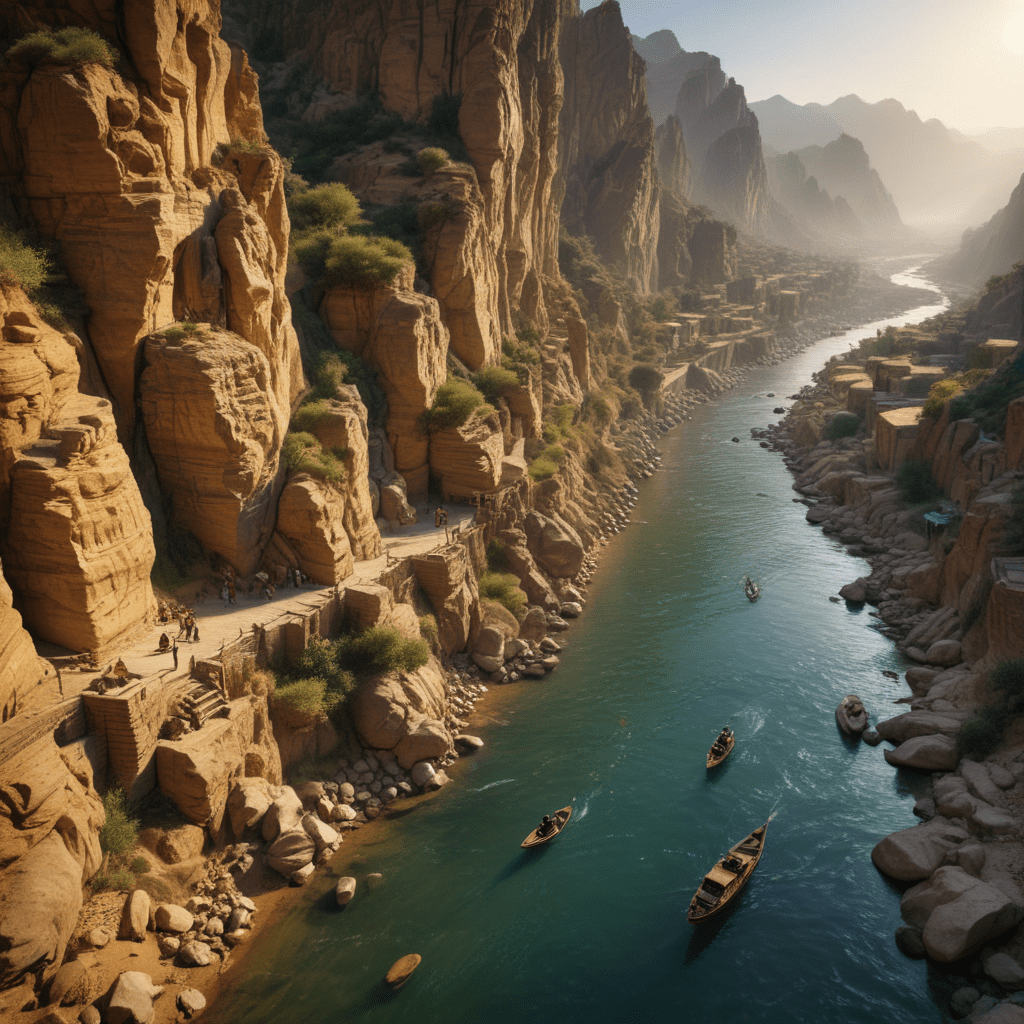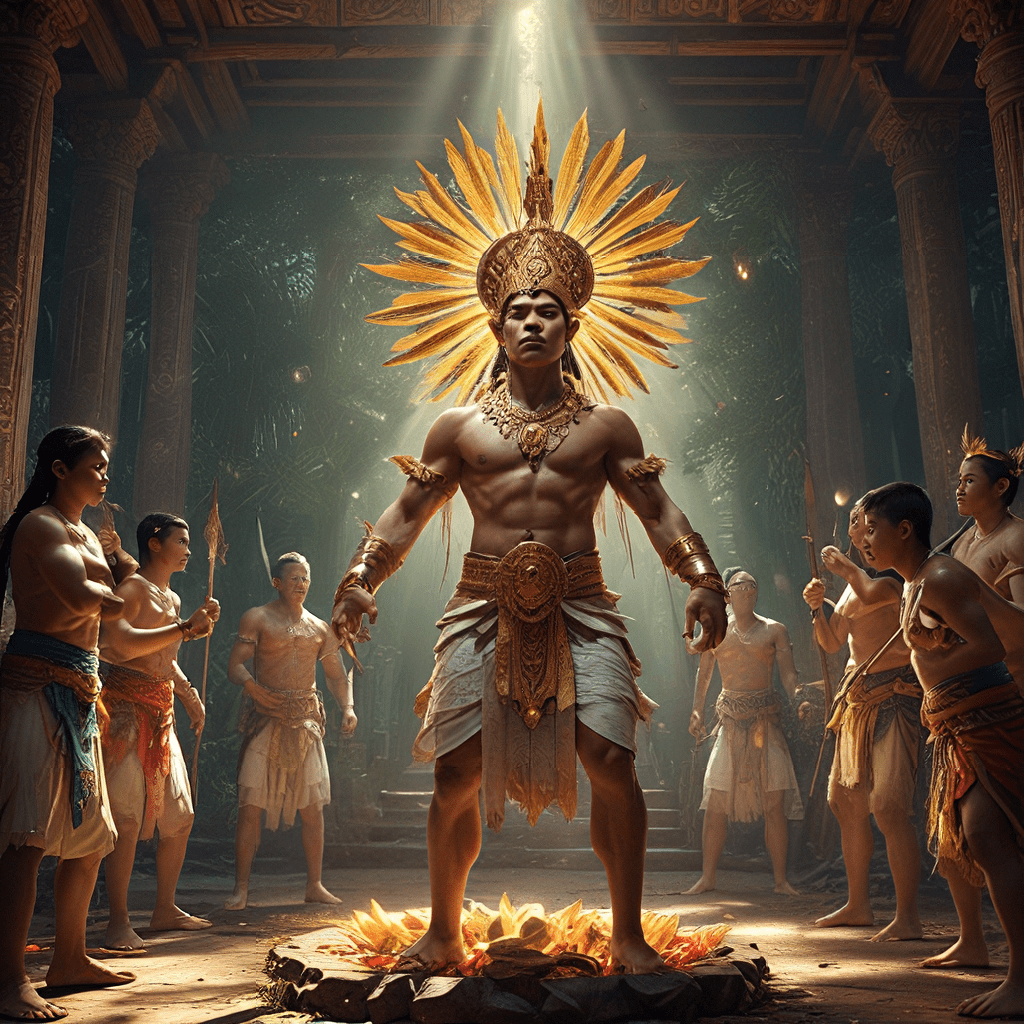The Mythical Rivers of Ancient Persia
Introduction:
Delving into the rich tapestry of ancient Persian mythology, we encounter a captivating realm where rivers hold profound symbolic significance. These mythical waterways embody life, renewal, and the very essence of the cosmos. In this exploration, we embark on a journey to unravel the mysteries of these legendary rivers, tracing their origins, meanings, and enduring influence on Zoroastrian beliefs and cultural narratives.
1. The River of Life: Ardvī Sūrā Anāhīta
1.1 Ardvī Sūrā Anāhīta: The Goddess of Water and Fertility
Ardvī Sūrā Anāhīta, revered as the goddess of water, fertility, and wisdom, occupies a central position in the Zoroastrian pantheon. Her name translates to "moist, strong, and immaculate," reflecting her association with life-giving waters and purity. Depicted as a beautiful maiden adorned with flowing robes and holding a water pot, Ardvī Sūrā Anāhīta embodies the nurturing essence of nature.
1.2 The Avesta and the River of Life
The Avesta, the sacred text of Zoroastrianism, extols the virtues of Ardvī Sūrā Anāhīta. In Yasht 5, dedicated solely to her, she is described as the source of all waters, both earthly and celestial. Her celestial abode is Mount Hukairya, where she presides over a vast lake from which flow the seven greatest rivers of the earth. These rivers nourish the land, bringing life and prosperity to all creation.
1.3 The Role of Ardvī Sūrā Anāhīta in Zoroastrianism
In Zoroastrianism, Ardvī Sūrā Anāhīta is not merely a goddess of nature, but also a symbol of ethical purity and spiritual enlightenment. Just as water cleanses the physical body, her presence purifies the soul. By invoking her name and seeking her blessings, devotees aim to overcome evil and attain spiritual perfection.
2. The River of Renewal: Daitya
2.1 Daitya: The River of Purification
Daitya, also known as the "Holy River," symbolizes purification and spiritual cleansing. In Zoroastrian cosmology, Daitya flows through the celestial realm and is associated with the stars. Its waters are believed to possess the power to wash away sins and negative thoughts, paving the way for spiritual rebirth.
2.2 The Avesta and the River of Renewal
The Avesta mentions Daitya in several passages, highlighting its role in maintaining cosmic harmony. Yasht 19 describes the river as the source of all good things, including rain, fertility, and prosperity. Drinking from its waters is said to grant immortality and eternal life.
3. The Flowing Sea: Vourukasha
3.1 Vourukasha: The Encircling Sea
Vourukasha, the "wide-encircling sea," encloses the entire world in Zoroastrian cosmology. Its vastness represents the boundless nature of the universe and the interconnectedness of all things. The sea is also seen as a source of life, as it is believed to be the origin of all rivers and bodies of water.
4. The Fountain of Youth: Ardvi Sura Anahita
4.1 Ardvi Sura Anahita: The Fountain of Immortality
In Zoroastrian lore, Ardvi Sura Anahita is also associated with the concept of immortality. Her connection to the life-giving waters suggests her ability to grant eternal life to those who partake in her blessings. In Yasht 5, it is mentioned that drinking from her celestial lake would bestow immortality upon the righteous.
4.2 The Avesta and the Fountain of Youth
The Avesta describes Ardvi Sura Anahita's waters as having the power to heal and rejuvenate. Drinking from her spring is believed to restore youth and vitality, even reversing the effects of aging. This association with immortality further emphasizes her role as a symbol of life and renewal.
4.3 The Significance of Ardvi Sura Anahita in Zoroastrianism
Ardvi Sura Anahita's connection to immortality underscores the Zoroastrian belief in the ultimate triumph of good over evil and the promise of eternal life for the righteous. Her presence offers hope and inspiration, assuring followers that even in the face of mortality, there exists a path to eternal existence.
5. The Boundary of the World: Rangha
5.1 Rangha: The River of Separation
Rangha, the "enclosing river," marks the boundary between the material world and the spiritual realm. It is described as a vast and impassable river, separating the realm of mortals from the abode of the gods. Crossing Rangha is considered a symbolic act of death, signifying the transition from the earthly realm to the afterlife.
5.2 The Avesta and the Boundary of the World
The Avesta mentions Rangha in various passages, highlighting its role as a barrier between the physical and spiritual realms. In Yasht 19, it is described as a river of fire that burns away all impurities, preparing the soul for its journey to the afterlife.
5.3 The Role of Rangha in Zoroastrian Cosmology
Rangha's symbolic significance lies in its representation of the separation between the temporal and the eternal. It serves as a reminder of the finite nature of earthly existence and the existence of a higher realm beyond the reach of mortality.
6. The Heavenly River: Wah Rud
6.1 Wah Rud: The River of Paradise
Wah Rud, the "good river," flows through the celestial paradise known as Garodeman. It is described as a river of milk and honey, symbolizing the abundance and prosperity of the afterlife. Drinking from its waters is believed to bring eternal happiness and contentment.
6.2 The Avesta and the Heavenly River
The Avesta describes Wah Rud in vivid detail, emphasizing its role as a source of joy and bliss in the afterlife. Yasht 19 depicts the river as flowing through gardens of paradise, where the righteous dwell in eternal peace and harmony.
6.3 The Symbolism of Wah Rud in Zoroastrianism
Wah Rud serves as a symbol of the ultimate reward for those who live a virtuous life. Its presence in the Zoroastrian concept of paradise offers hope and motivation to followers, assuring them that their righteous deeds will be rewarded in the afterlife.
Frequently Asked Questions (FAQ)
Q: What is the significance of rivers in Zoroastrianism?
A: Rivers hold profound symbolic significance in Zoroastrianism, representing life, purity, and the interconnectedness of all things. They are also associated with various deities and concepts, playing a crucial role in Zoroastrian mythology and cosmology.
Q: What are the main mythical rivers in ancient Persia?
A: The main mythical rivers in ancient Persia include Ardvī Sūrā Anāhīta (the River of Life), Daitya (the River of Renewal), Vourukasha (the Flowing Sea), Rangha (the Boundary of the World), and Wah Rud (the Heavenly River).
Q: What is the role of Ardvī Sūrā Anāhīta in Zoroastrianism?
A: Ardvī Sūrā Anāhīta is the goddess of water, fertility, and wisdom. She is associated with life-giving waters and purity, playing a significant role in Zoroastrian religious practices and beliefs.
Q: What is the significance of Rangha in Zoroastrian cosmology?
A: Rangha, the River of Separation, marks the boundary between the material world and the spiritual realm. It symbolizes the finite nature of earthly existence and the existence of a higher realm beyond the reach of mortality.
Q: What is the symbolism of Wah Rud in Zoroastrianism?
A: Wah Rud, the River of Paradise, symbolizes the ultimate reward for those who live a virtuous life. Its presence in the Zoroastrian concept of paradise offers hope and motivation to followers, assuring them that their righteous deeds will be rewarded in the afterlife.



